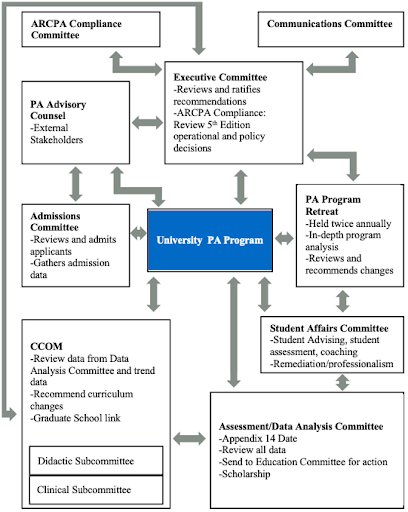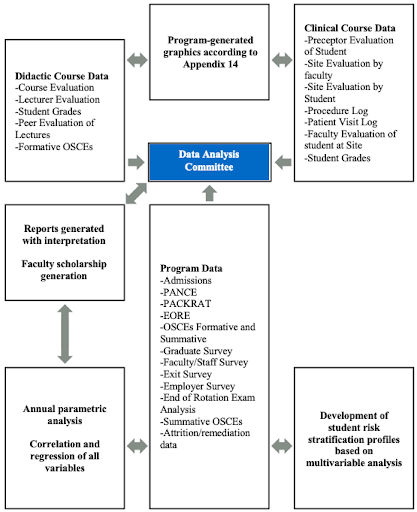ARC-PA 5th Edition Standards: The Assessment Workload

In this blog entry, we look at how we can engage our faculties in the data assessment process. Our PA programs already operate with limited personnel resources. Now we must ask our faculty to participate in assessment in addition to other duties.
ACA-PA 5th Edition Standards require that PA programs gather and analyze a robust amount of data. It’s a given, an understood part of the workload. Yet, many individual faculty members view comprehensive assessment as one more responsibility added beyond their purpose of teaching students.
Implementing a fully compliant assessment system, as defined by ARC-PA, requires operational committees. Yet, faculty often struggle just with acclimating to the academic environment. Being able to assimilate into teaching can be a challenge. We must train faculty, so they understand how to work with these principals.
Analyzing and tabulating data sets requires advanced strategic planning and workforce to achieve. One of the things that we see inside programs, and I’ve experienced this for many years myself, is that this is where problems arise about tracking and interpreting data. Who is responsible for doing this, to make sure that it is ready to present?
Simply stated, if a process is not in place for assessment, the machine breaks down. Being able to implement this process means that you have to have operational committees.
A number of years ago, I developed a system that I have used successfully and efficiently. This system:
- ensures that the information is communicated throughout the committee structure and documented in committee minutes; and
- ensures that the action plan and the final disposition is recorded and followed up.
This diagram represents the system:

Next, I present a schematic committee structure that I recommend. It begins with a centralized data analysis committee system, where all of the packaged data flows into one committee.
That committee reviews all the data sets, interprets the data, documents the critical analysis in the committee minutes, as well as the recommended actions. They then refer analysis and recommended actions to the appropriate committee. Appendix 14 delineations define the committees under the structure. In upcoming blogs, we’ll take the time to examine the various subparts under Appendix 14 in order to make the differentiation of data even easier.
For example, if data falls under Appendix 14.C. requirements, such as “instructor and course evaluations,” that would logically go to the Didactic Course subcommittee. If the data is for Appendix 14.D. requirements, i.e., the “clinical year,” that would fall under the Clinical Course subcommittee’s purview. Sufficiency and effectiveness of staff, which is under 14.G, that data would go an ARC compliance committee, because that committee would look at specific standards that need modification, then make recommendations to senior administration. In this particular model, the Executive Committee, which is a typical faculty meeting, is the committee that will ratify recommendations or major modifications in the curriculum, based upon the committees’ recommendation.

These systems may not work ideally for every program. But I hope these serve as framework or inspiration for how to organize the complex system of data management through an already busy department.
In our next blog, we will continue our discussion by tackling the importance of documenting conclusions and decisions in committee meeting minutes.

